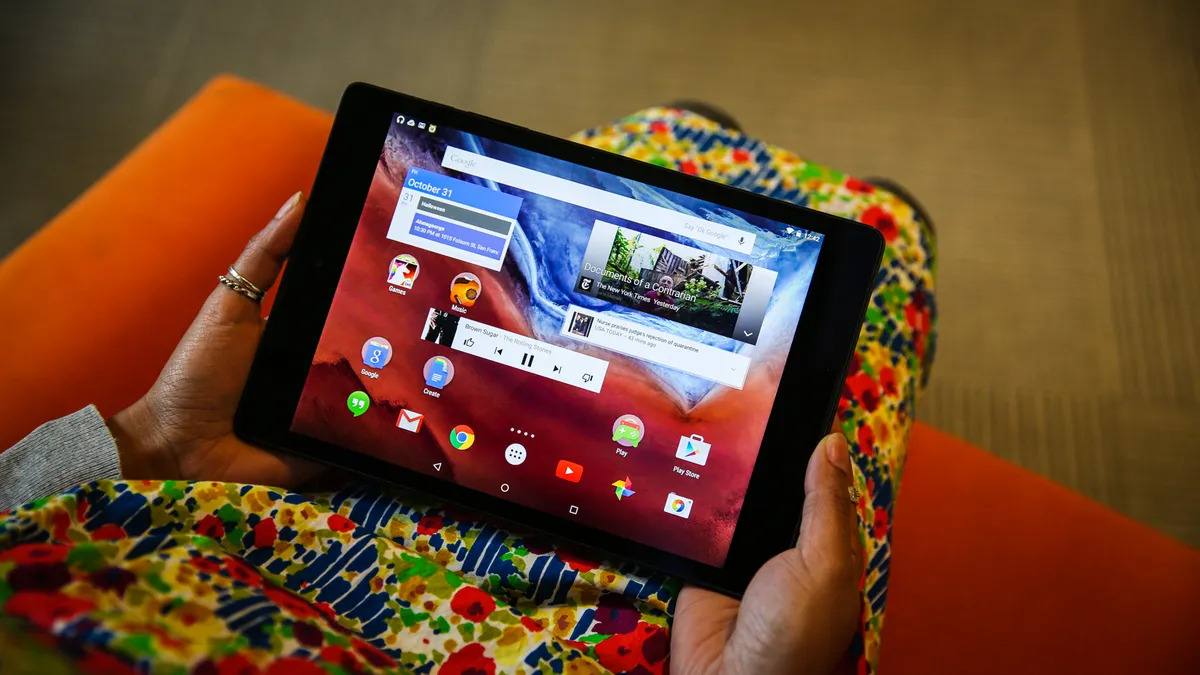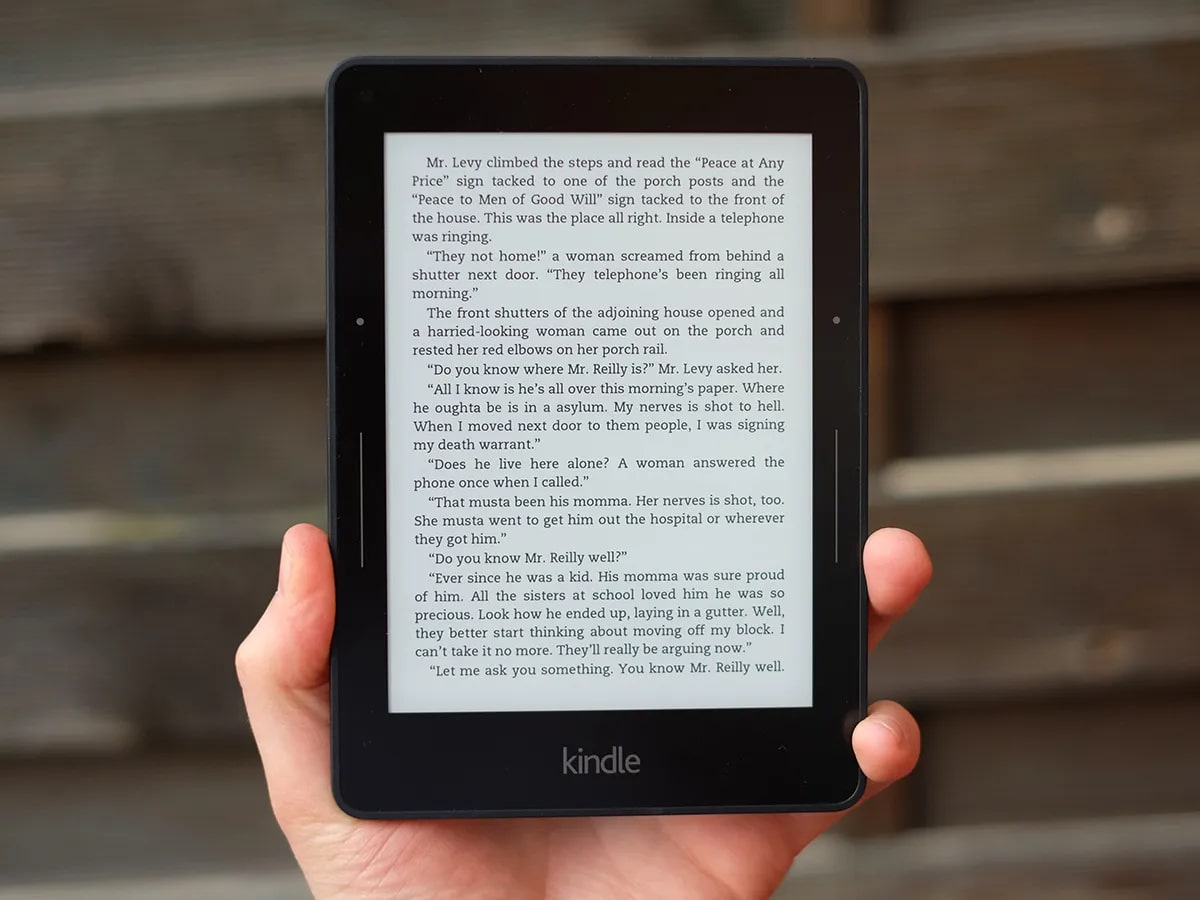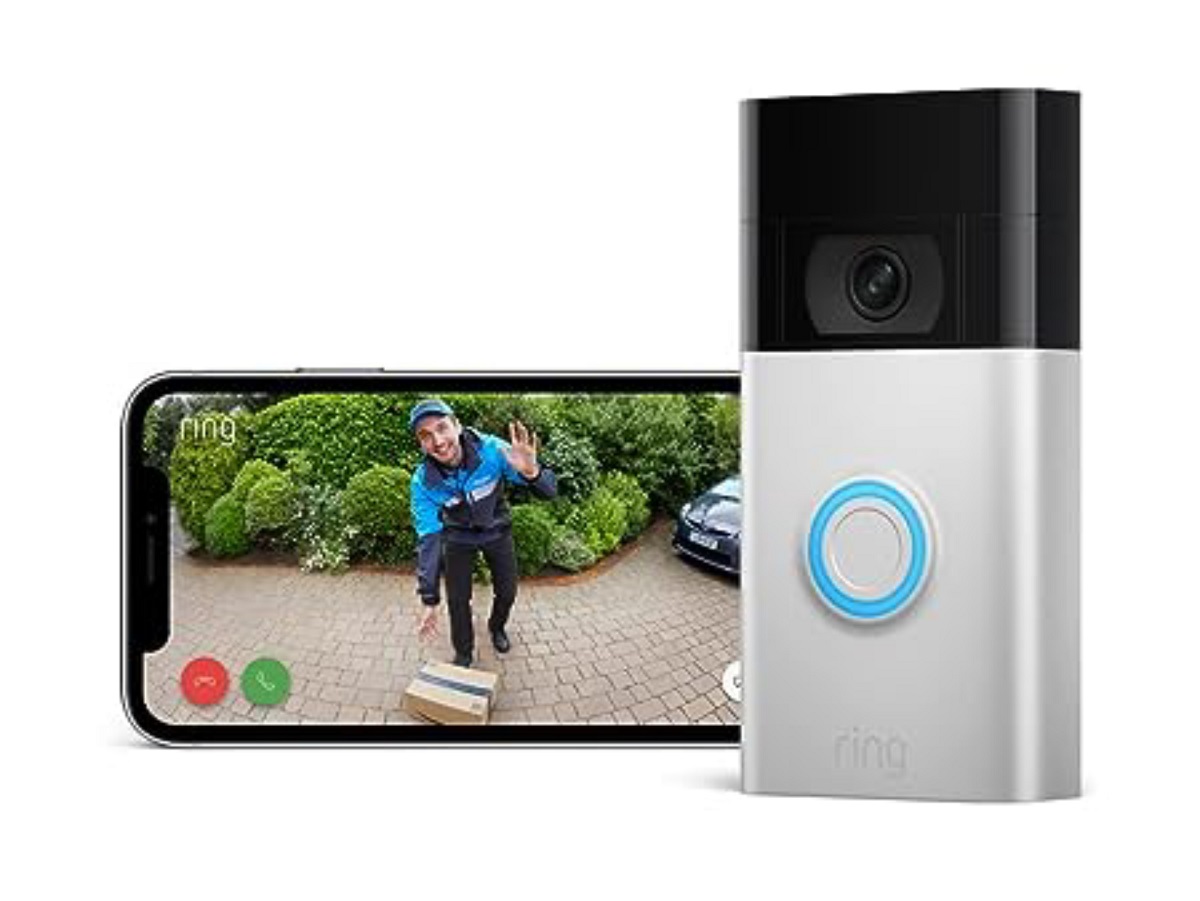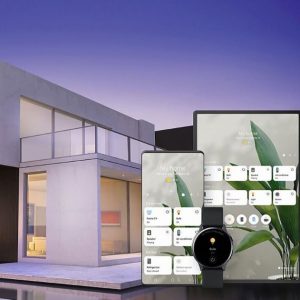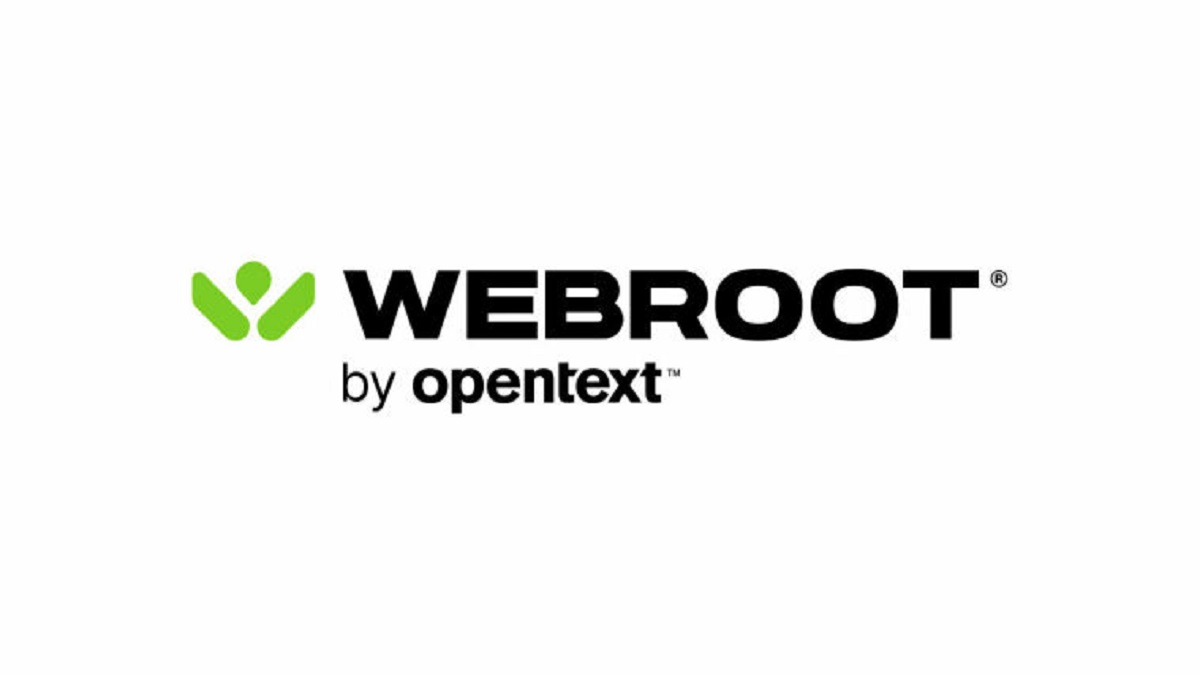Introduction
The year 2014 was an exciting time for technology enthusiasts, particularly for those in search of a new tablet. With numerous advancements in technology and the release of cutting-edge models, it became an opportune time to invest in this versatile device. Tablets offered a convenient way to consume media, stay connected online, and even replace laptops for some users.
During this period, the market saw the entry of several high-profile brands, each offering their unique features and benefits. From Apple’s iPad to Samsung’s Galaxy Tab, tablet manufacturers competed fiercely to provide the best user experience and innovative features.
In this article, we will explore the various factors to consider when buying a tablet in 2014, as well as the latest releases and upcoming trends in the industry. Whether you were a student looking for a device to aid your studies or a professional seeking a portable workstation, the aim was to provide you with the information needed to make an educated purchase decision.
The Latest Releases
2014 saw the release of several highly anticipated tablet models, each showcasing the latest advancements in technology. Apple unveiled the iPad Air 2, which boasted a thinner and lighter design compared to its predecessor. Equipped with a powerful A8X chip and an improved Retina display, the iPad Air 2 offered a superior performance and enhanced graphics for an immersive user experience.
Not to be outdone, Samsung introduced the Galaxy Tab S series, featuring stunning Super AMOLED displays with vibrant colors and deep blacks. With models available in both 8.4-inch and 10.5-inch sizes, the Galaxy Tab S offered a versatile option for media consumption and productivity.
In addition to these popular brands, other manufacturers also entered the market with noteworthy releases. Google’s Nexus 9, manufactured by HTC, delivered a pure Android experience combined with a sleek design and powerful performance. Microsoft launched the Surface Pro 3, blurring the line between tablet and laptop with its detachable keyboard and desktop-like functionality.
Furthermore, Amazon introduced the Fire HDX series, with its Fire HDX 8.9 being hailed as one of the best tablets for media consumption. The device offered a stunning display, high-quality speakers, and access to Amazon’s vast media library.
Whether you were an avid Apple fan, an Android enthusiast, or a fan of other brands, 2014 provided multiple options to suit different preferences and budgets. The latest releases showcased significant improvements in design, performance, and functionality, making it an exciting time for tablet enthusiasts.
Choosing the Right Operating System
When buying a tablet in 2014, one of the crucial decisions to make was selecting the right operating system (OS) that best suited your needs. The three primary options available were iOS, Android, and Windows.
Apple’s iOS, exclusively available on iPads, offered a seamless and intuitive user experience. Known for its sleek design and user-friendly interface, iOS provided a vast selection of apps optimized for iPad, making it an ideal choice for those seeking a seamless integration with other Apple devices.
On the other hand, Android, an open-source OS, offered a greater degree of customization and freedom. With various manufacturers producing Android tablets, users had a wide range of options to choose from in terms of design, specifications, and price points. Android also boasted a vast app ecosystem and seamless integration with other Google services.
Windows tablets, powered by Microsoft’s operating system, provided a unique advantage for those looking to use their tablets for productivity and work-related tasks. Windows tablets offered a desktop-like experience, allowing users to run full versions of Microsoft Office and other productivity software. Additionally, the ability to connect a detachable keyboard and utilize features like multitasking and file management made Windows tablets a popular choice for professionals.
When choosing the right operating system, it was important to consider factors such as user interface preference, available apps and software compatibility, ecosystem integration, and the intended use of the tablet. By understanding the strengths and limitations of each operating system, buyers could make an informed decision that aligned with their specific needs and preferences.
Factors to Consider When Buying a Tablet
When purchasing a tablet in 2014, it was essential to consider several factors to ensure you found the perfect device for your needs. Below are some key considerations to keep in mind:
- Screen Size and Resolution: The screen size and resolution play a significant role in determining the overall user experience. Larger screens are ideal for media consumption and multitasking, while smaller screens offer portability. High-resolution displays offer sharper visuals and improved clarity.
- Processing Power and Performance: The processor and RAM determine a tablet’s performance. Faster processors and higher RAM capacity allow for smoother multitasking, faster app launches, and better overall performance.
- Battery Life: Consider the battery life offered by the tablet. Longer battery life ensures that you can use the device for extended periods without needing to recharge frequently.
- Storage Capacity: Determine the amount of storage space you require for your apps, files, and media. Tablets offer different storage options, with some also allowing for expandable storage via microSD cards.
- Connectivity Options: Consider the connectivity options available on the tablet, such as Wi-Fi, cellular data, and Bluetooth. These features determine how you can connect to the internet, transfer files, and connect with other devices.
- Camera Quality: If capturing photos and videos is important to you, assess the quality of the tablet’s camera. Look for devices with higher megapixel counts and advanced camera features.
- Build Quality and Durability: Look for tablets that are built with high-quality materials and have a sturdy construction. This ensures durability and longevity, especially if you plan to use the tablet on the go.
- Price and Budget: Set a budget and consider the price range that fits your requirements. Evaluate the features and specifications offered by tablets within your budget to ensure you get the best value for your money.
By considering these factors and prioritizing your needs, you can make a well-informed decision and find a tablet that aligns with your requirements and preferences.
Budget-Friendly Options
For those seeking a tablet in 2014 on a limited budget, there were several budget-friendly options available that still offered decent performance and functionality. While these tablets may not have had all the bells and whistles of their high-end counterparts, they provided a cost-effective solution for those with specific needs. Here are some of the budget-friendly options worth considering:
- Nexus 7 (2013): The Nexus 7, a collaboration between Google and ASUS, was highly regarded for its affordability and solid performance. With its 7-inch display, powerful processor, and stock Android experience, the Nexus 7 offered excellent value for money.
- Amazon Fire HD: Amazon’s Fire HD tablets were designed with affordability in mind. These tablets provided a compact design, decent performance, and access to Amazon’s vast content library, making them a popular choice for entertainment purposes.
- Samsung Galaxy Tab A: The Samsung Galaxy Tab A series offered a balance between affordability and functionality. With its 8-inch or 9.7-inch display, long battery life, and expandable storage, the Galaxy Tab A provided a reliable tablet experience at a reasonable price.
- Lenovo Tab 2 A10: Lenovo’s Tab 2 A10 featured a 10.1-inch display, offering a large screen for media consumption and productivity. With its affordable price, 64-bit quad-core processor, and Dolby Atmos audio, the Tab 2 A10 delivered excellent value in the budget tablet market.
- ASUS MeMO Pad 7: The ASUS MeMO Pad 7 was a compact and affordable tablet option. With its Intel Atom processor, expandable storage, and decent performance, it was a suitable choice for those looking for a basic tablet experience without breaking the bank.
While these budget-friendly options may not have had all the high-end features found in premium tablets, they provided a cost-effective solution for individuals who prioritized functionality and affordability. These tablets still offered respectable performance, allowing users to enjoy everyday tasks such as web browsing, watching videos, reading e-books, and even some light gaming.
Black Friday and Holiday Deals
If you were in the market for a tablet in 2014, you were likely aware of the incredible deals and discounts offered during the Black Friday and holiday season. This period presented a fantastic opportunity to snag a tablet at a significantly reduced price. Retailers and online stores alike offered exclusive deals and promotions that made it an ideal time to purchase a tablet.
During Black Friday and Cyber Monday, major retailers such as Best Buy, Walmart, and Amazon offered substantial discounts on popular tablet models. These deals ranged from significant price reductions to bundle packages that included accessories such as cases, screen protectors, and stylus pens. Online marketplaces like eBay and Newegg also joined in, offering competitive prices and flash sales during this time.
In addition to Black Friday, the holiday season, including Thanksgiving, Christmas, and New Year, also brought forth numerous promotions. Retailers aimed to attract customers by offering discounts, gift cards, and even free accessories with the purchase of a tablet. With the high demand for tablets during this period, major brands like Apple and Samsung often ran their own holiday promotions, enticing customers with special offers and incentives.
It’s worth noting that while the Black Friday and holiday deals were tempting, it was essential to do thorough research beforehand. Comparing prices across different retailers and reading customer reviews ensured that you received the best value for your money. Additionally, making sure to check the terms and conditions, including warranty coverage and return policies, was crucial to avoid any potential issues down the line.
Overall, the Black Friday and holiday season presented an excellent opportunity to purchase a tablet at a discounted price. Savvy buyers took advantage of the deals available and managed to get their hands on their desired tablet model, all while saving a significant amount of money.
Comparison of Tablet Brands
When shopping for a tablet in 2014, comparing different brands was essential to find the best fit for your needs. Each brand had its strengths and weaknesses, offering unique features and user experiences. Here is a comparison of some popular tablet brands available at the time:
- Apple: Known for its premium build quality and seamless integration with other Apple devices, the iPad line offered a smooth and user-friendly experience. Apple’s iOS provided access to a vast selection of high-quality apps optimized for the iPad, making it a top choice for those invested in the Apple ecosystem.
- Samsung: With its Galaxy Tab lineup, Samsung provided a range of options to cater to different budgets and preferences. Samsung tablets often featured vibrant displays, expandable storage, and sleek designs. Some models even included stylus support, offering added productivity for certain tasks.
- Google: Google’s Nexus lineup, manufactured by various partners, offered a pure Android experience. These tablets showcased the latest version of Android and received timely updates directly from Google. Nexus tablets were known for their smooth performance, affordability, and integration with Google services.
- Microsoft: Microsoft’s Surface series stood out for its ability to seamlessly transition between a tablet and a laptop. With full Windows operating systems and optional detachable keyboards, Surface tablets provided a desktop-like experience, ideal for productivity and creativity.
- Amazon: Known for their budget-friendly options, Amazon’s Fire tablets offered a gateway to Amazon’s vast content library and services. These tablets had a simplified interface focused on media consumption, making them popular choices for entertainment purposes.
- Lenovo: Lenovo tablets combined affordability with solid performance and build quality. With a range of sizes and features, Lenovo offered options for different needs, whether it was for casual use or productivity.
When comparing tablet brands, it was crucial to consider factors such as operating system preference, desired features, budget, and ecosystem integration. Each brand had its loyal fanbase, and the choice ultimately came down to personal preference and specific requirements.
By carefully assessing the strengths and weaknesses of each brand and comparing the available models, buyers could identify the tablet that best suited their needs in terms of performance, design, usability, and value for money.
Popular Tablet Accessories
In addition to the tablet itself, there were several popular accessories available in 2014 that enhanced the functionality and user experience. These accessories allowed users to customize and personalize their tablets while adding convenience and protection. Here are some of the popular tablet accessories:
- Tablet Cases and Covers: A must-have accessory, tablet cases and covers offered protection against scratches, bumps, and accidental drops. They came in various styles and materials, including folio cases, keyboard cases, and rugged cases, allowing users to choose the level of protection and style that suited their preferences.
- Screen Protectors: Screen protectors were vital in shielding the tablet’s display from fingerprints, smudges, and scratches. These thin protective films were easy to apply and ensured the screen remained clear and visible while preventing unwanted damage.
- Stylus Pens: Stylus pens provided a more precise and comfortable way to interact with the tablet, especially for tasks like drawing, note-taking, and digital artwork. These pens often featured pressure sensitivity, allowing for different levels of line thickness and opacity.
- Bluetooth Keyboards: Bluetooth keyboards transformed tablets into productivity tools, enabling comfortable typing for longer periods. These portable keyboards connected wirelessly to the tablet, offering a more efficient and convenient way to write emails, documents, and other text-based tasks.
- External Battery Packs: External battery packs or power banks were practical accessories that provided an additional power source for extended tablet usage. These portable chargers allowed users to charge their tablets on-the-go, ensuring they never ran out of power while away from electrical outlets.
- Wireless Speakers and Headphones: Wireless speakers and headphones offered an enhanced audio experience while enjoying media on the tablet. These accessories provided better sound quality and the freedom to move around without worrying about tangled wires.
- Car Mounts and Stands: Car mounts and stands were useful for those using their tablets for navigation or entertainment while on the road. These accessories securely held the tablet in place, allowing for hands-free usage and ensuring a safer driving experience.
These popular tablet accessories provided users with a wide range of options to enhance their tablet experience. Whether it was for protection, productivity, creativity, or entertainment, these accessories allowed users to tailor their tablets to their specific needs and preferences.
Future Trends and Upcoming Releases
In 2014, the tablet market was continuously evolving, with new trends and upcoming releases shaping the industry’s future. Here are some of the trends and anticipated releases that were creating excitement among tech enthusiasts:
- Thinner and Lighter Designs: Manufacturers were constantly pushing the boundaries of tablet design, aiming to make devices even thinner and lighter. This trend allowed for greater portability and convenience, making tablets more comfortable to hold and carry.
- Higher Resolution Displays: Display technology was improving rapidly, with companies introducing higher resolution screens. Tablets were expected to offer even more vibrant colors, sharper details, and improved color accuracy, enhancing the overall visual experience.
- Increased Processing Power: As demands for multitasking, gaming, and content creation grew, tablets were becoming more powerful. Upcoming devices were expected to feature faster processors, more RAM, and improved graphics capabilities, allowing for smoother performance and better gaming experiences.
- Enhanced Battery Life: Battery life remained a key focus for manufacturers, with efforts being made to extend the usage time of tablets. Upcoming releases were anticipated to offer more efficient battery technologies, allowing users to enjoy their tablets for even longer durations without needing to recharge.
- Integration with Augmented Reality (AR) and Virtual Reality (VR): Tablets were incorporating AR and VR capabilities, providing users with immersive experiences. Upcoming releases aimed to take advantage of these technologies, opening up new possibilities for gaming, educational applications, and virtual experiences.
- Improved Security Features: With increased concerns about data privacy and security, tablets were expected to incorporate more advanced security features. Features such as fingerprint scanners and facial recognition technology were anticipated to become standard, providing users with enhanced protection for their personal information.
- Hybrid Devices: The line between tablets and laptops was becoming blurred, with the rise of hybrid devices that combined the best features of both. Manufacturers were expected to release more 2-in-1 devices that could function as both a tablet and a laptop, offering the flexibility to switch between tablet and productivity modes.
These future trends and anticipated releases showcased the continuous innovation and improvements happening in the tablet industry. Technology enthusiasts eagerly awaited these upcoming devices, with expectations of enhanced performance, innovative features, and a more immersive user experience.
Conclusion
In 2014, the tablet market was filled with exciting options and technological advancements that shaped the way we consumed media and interacted with digital content. From the latest releases by major brands to the affordable options for budget-conscious buyers, there was a tablet to suit every need and preference.
When purchasing a tablet in 2014, it was crucial to consider factors such as operating systems, screen size, performance, battery life, and budget. Each brand had its strengths and weaknesses, whether it was Apple’s seamless integration, Samsung’s vibrant displays, or Google’s pure Android experience.
Furthermore, accessories played a vital role in personalizing and enhancing the tablet experience. Options such as cases, screen protectors, stylus pens, and keyboards allowed users to protect their devices, increase productivity, and add convenience to their daily use.
Looking towards the future, upcoming trends and releases promised advancements in design, performance, displays, and integration with augmented and virtual reality. Thinner and lighter devices, improved battery life, and enhanced security features were just some of the developments awaiting tablet enthusiasts.
Overall, the year 2014 was an exciting time for tablet enthusiasts, with a wide array of options and features to choose from. Whether for work, entertainment, education, or creativity, tablets provided a versatile and portable solution for staying connected and enjoying digital content on the go.
As technology continues to advance, future releases will undoubtedly bring even more innovative features and possibilities. The tablet industry will continue to evolve, offering users new and improved devices to meet their ever-changing needs. Whether you are a seasoned tech enthusiast or a casual user, the tablet landscape in 2014 was an exciting time to explore the possibilities of these versatile devices.







